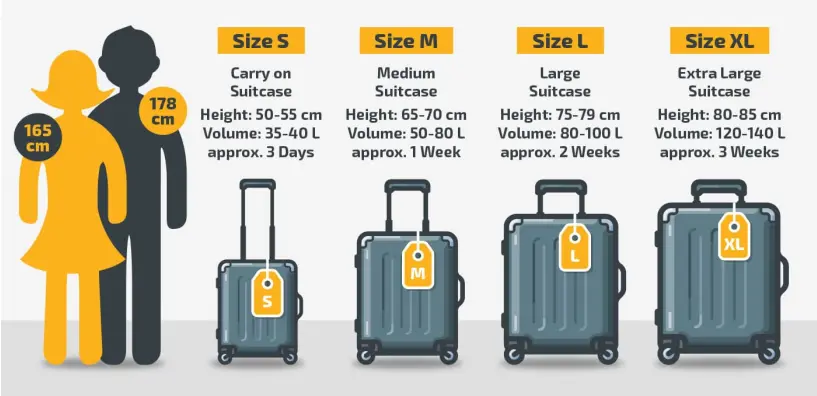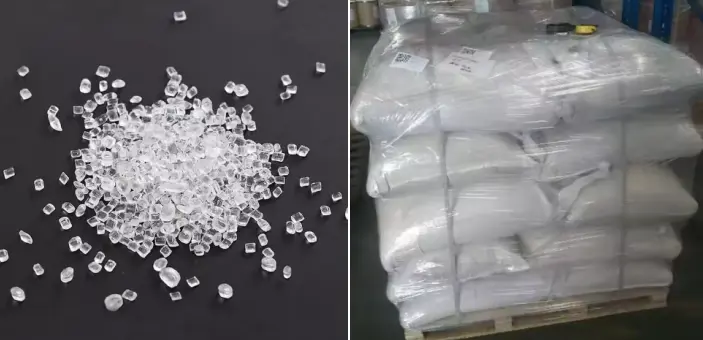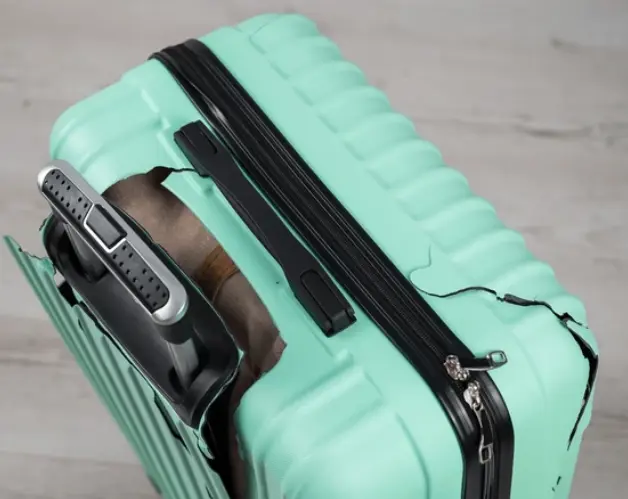How to Choose the Suitable Suitcase for Yourself?
Whether for business trips or leisure travel, a suitcase is an indispensable companion. However, no one wants to face the embarrassment of a poor-quality suitcase failing midway. Therefore, choosing a high-quality suitcase is crucial, as it directly affects the comfort and convenience of your journey. But do you really know how to select the right one? Let’s explore this comprehensive guide to help you easily find your ideal suitcase.
A Guide to Choosing a Suitcase
Suitcase Size and Material The size of a suitcase is the first factor to consider when purchasing. Common size labels such as 20inch and 24inch refer to inches. To help you understand sizes more intuitively, we’ll use the sum of the three dimensions for detailed analysis. This method will help you choose a size that suits your needs. Additionally, the material of the suitcase is a key factor determining its durability and cannot be ignored. 
Choosing the Right Size The size of a suitcase affects its portability and usability, with different sizes catering to different travel needs. A 20inch suitcase is often allowed as a carry-on by airlines, offering great convenience for travel. A typical 20inch suitcase measures 35cm × 23cm × 55cm, with the sum of its three dimensions being 113cm. Most airlines stipulate that suitcases with a total dimension sum of no more than 115cm can be carried onto the plane. To avoid unnecessary hassle, it’s recommended to choose a 20inch, 18inch, or 16inch suitcase for carry on purposes. For 24-inch and 28-inch suitcases: 24inch suitcase, usually 42cm × 25cm × 65cm, is very popular on the market. Its moderate capacity can hold plenty of items, making it ideal for college students or office workers for daily trips. 28inch suitcase (48cm × 28cm × 75cm) is among the larger options. It’s perfect for business travelers or students with busy schedules, as its large capacity can easily hold daily necessities and work supplies—even serving as a "mobile warehouse." It’s particularly popular during winter.
Note: International standards require checked luggage to have a total dimension sum of less than 158cm. If you plan to travel abroad, choose a suitcase smaller than 28 inches to ensure smooth checked-in.
How to choose the Right Material ?
The material of a suitcase is critical to its suitability, so it’s important to consider carefully. Most suitcases clearly label their materials, and understanding the characteristics of different materials will help you make a smarter decision. Hard-shell suitcases and soft-shell suitcases use different materials: hard-shell cases are often made of ABS, PP, PC, etc., while soft-shell cases are typically made of PE, EVA, or fabrics. The material determines durability and suitability—choose based on your needs.
ABS: Heat-resistant, wear-resistant, impact-resistant, waterproof, and pressure-resistant, effectively protecting your clothes.
PP: Uniform in color, no inner lining, excellent waterproof performance, and strong impact resistance.
PC: Boasts excellent electrical insulation, ductility, dimensional stability, and chemical resistance.
Aluminum-magnesium alloy: Highly malleable, durable, wear-resistant, and stylish in appearance—ideal for consumers pursuing extreme durability.

Key Details to Consider When Buying a Suitcase
When choosing a suitcase, details determine quality. Whether hard-shell or soft-shell, the case should exhibit exquisite craftsmanship. Look for suitcases with high-quality telescopic handles, durable wheels, scratch-resistant designs, secure locks, and practical internal compartments.
Case Details Checking the craftsmanship of the case is crucial. Pay attention to the symmetry of the corners, surface scratches, and stitching (for soft-shell cases).

First, check if the corners are symmetrical and the surface is smooth. You can place the suitcase upright or upside down on the ground to see if it stands steadily on all four corners. Inspect the surface for scratches or cracks.
For soft-shell cases, focus on the stitching of the fabric—high-quality stitching should have no exposed threads. The outer fabric should be well-sealed to resist rain and moisture, with a moderate texture to enhance wear resistance. Explosion-proof designs and high-quality zippers are also important for safety. When the suitcase is fully packed, zippers bear significant pressure; poor-quality zippers may cause the case to "burst." To prevent this, many manufacturers improve zippers with designs like double-row teeth to enhance grip.
Other Important Details
Telescopic Baffles: Though not always used, telescopic baffles in the internal design can be a lifesaver when you need extra space—you’ll appreciate them when the suitcase is full.
Internal Compartments: A well-designed interior makes the suitcase more practical. If you need to carry suits, laptops, or other items, check for dedicated compartments.
Lock Security: Test the lock’s accuracy by trying random combinations. Many brands highlight TSA locks—if you frequently travel to the U.S., consider choosing a suitcase with this feature.
By considering these factors—size, material, and details—you’ll be able to select a suitcase that perfectly fits your travel needs, ensuring convenience and reliability on every journey.
Related News
SUBSCRIBE
INQUIRY
